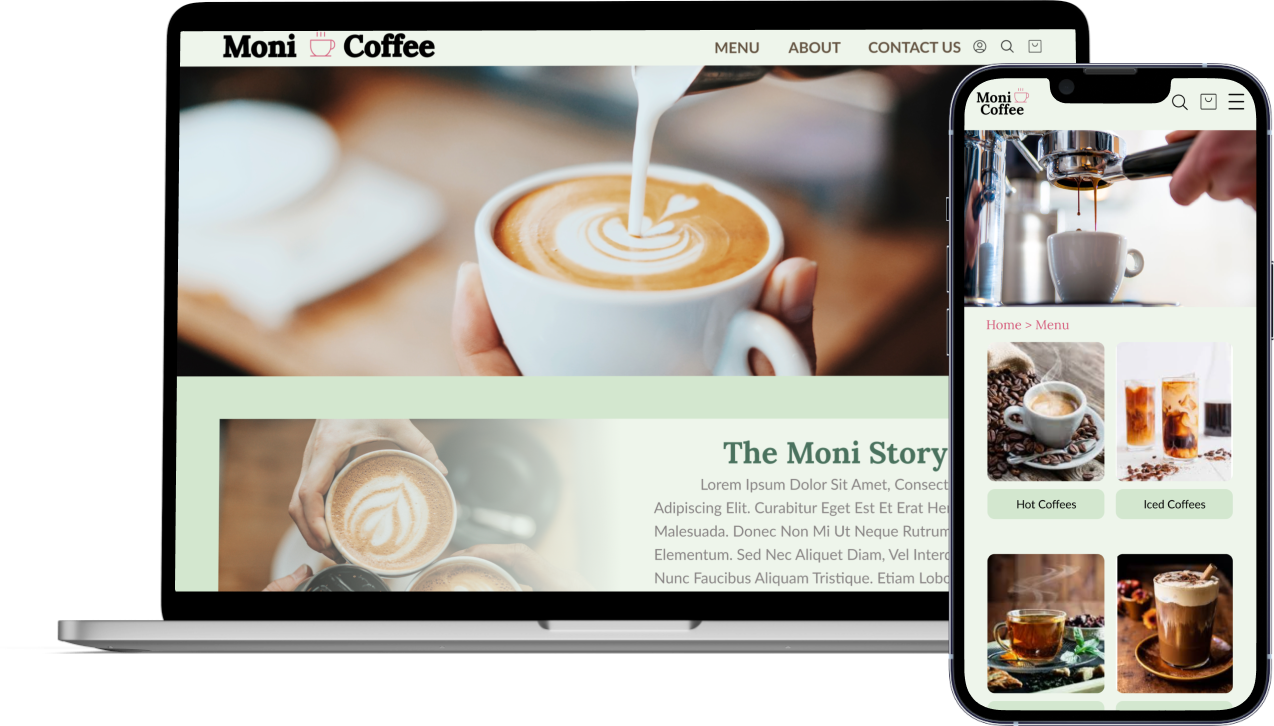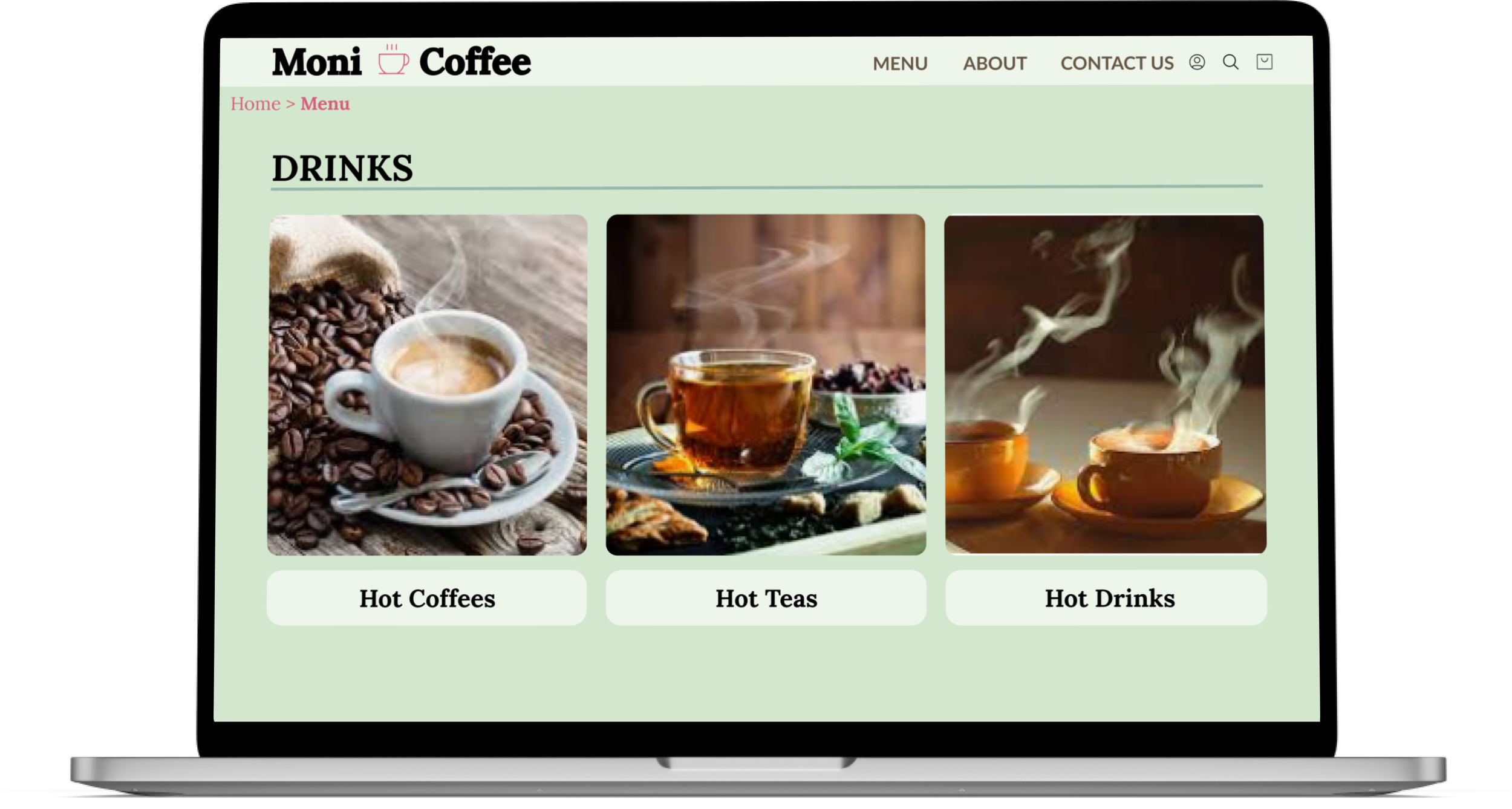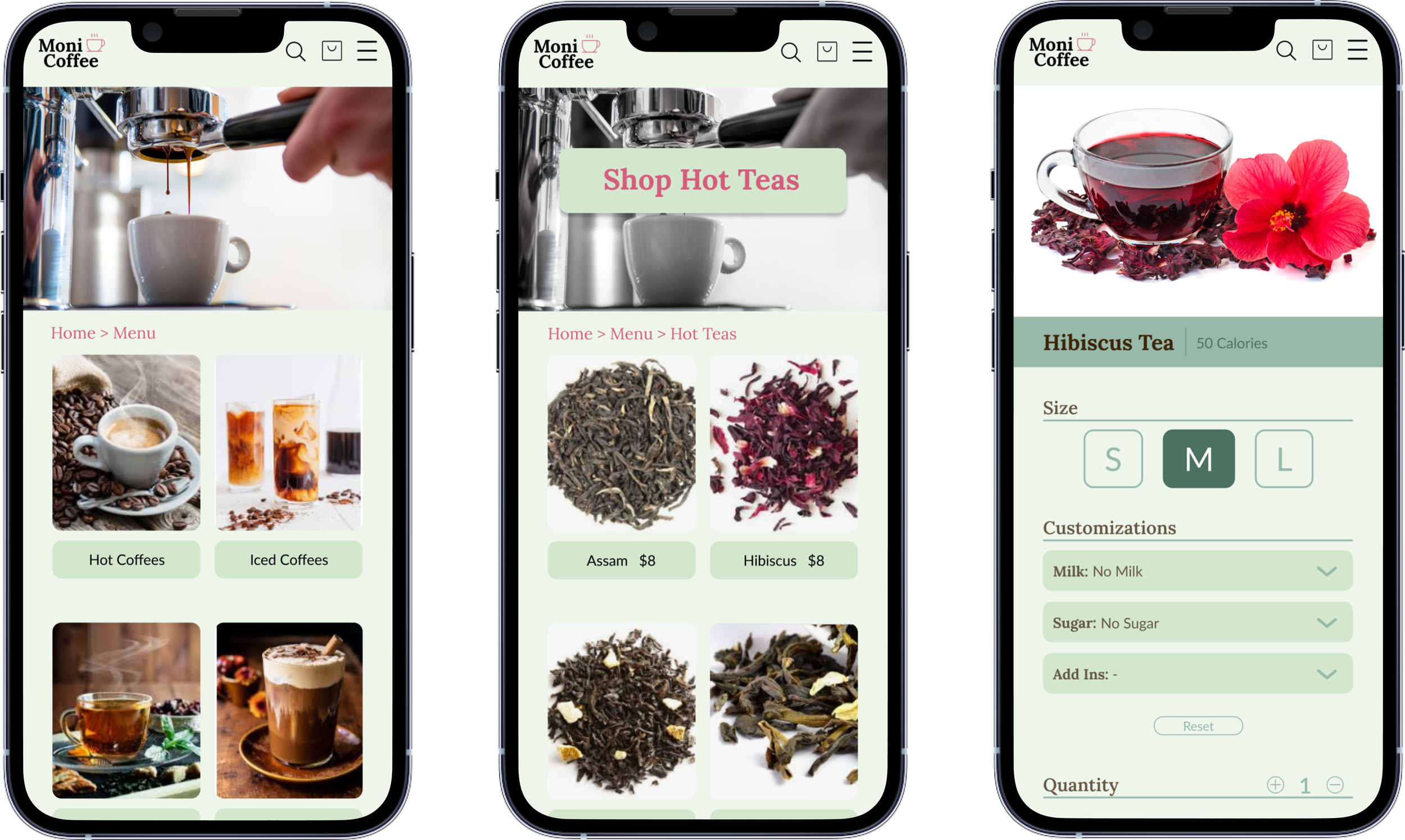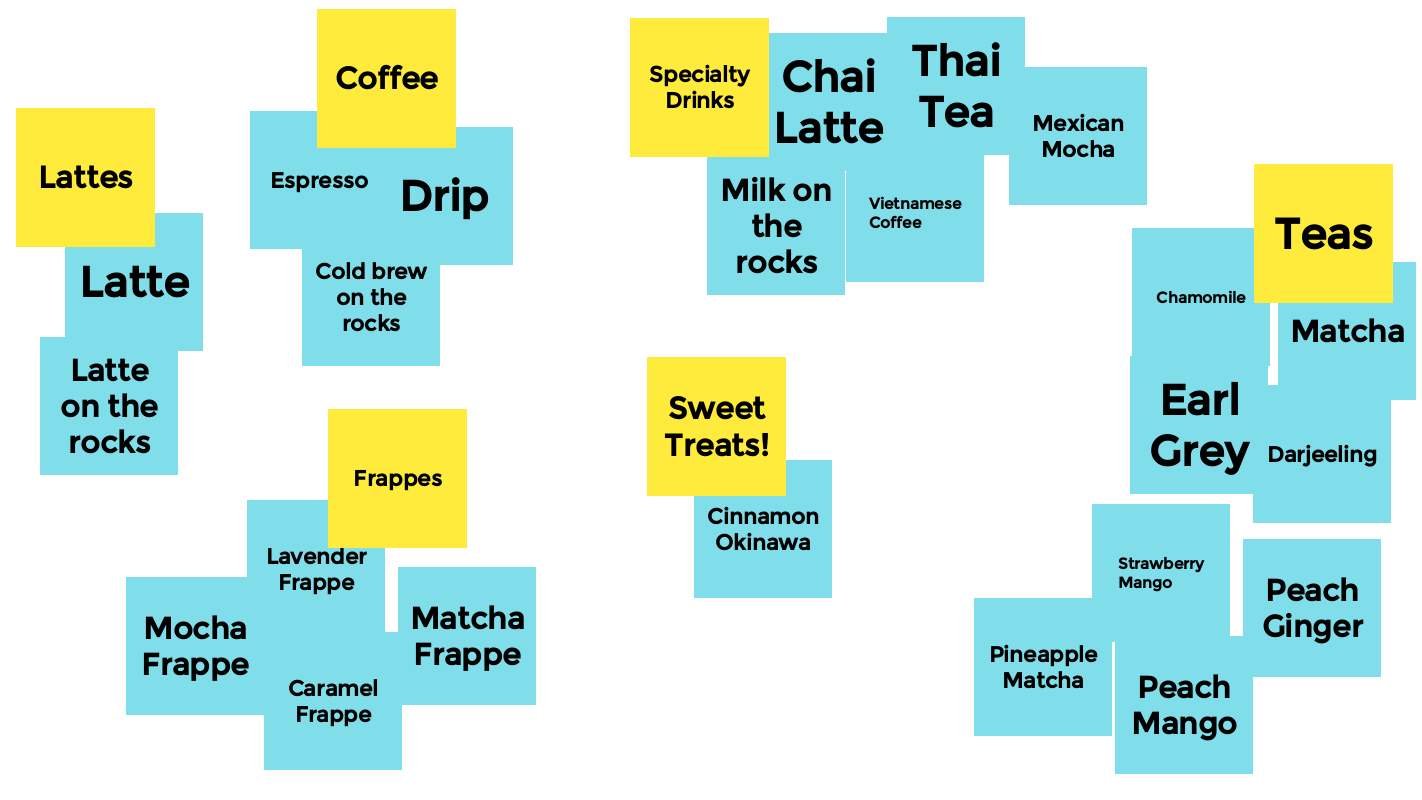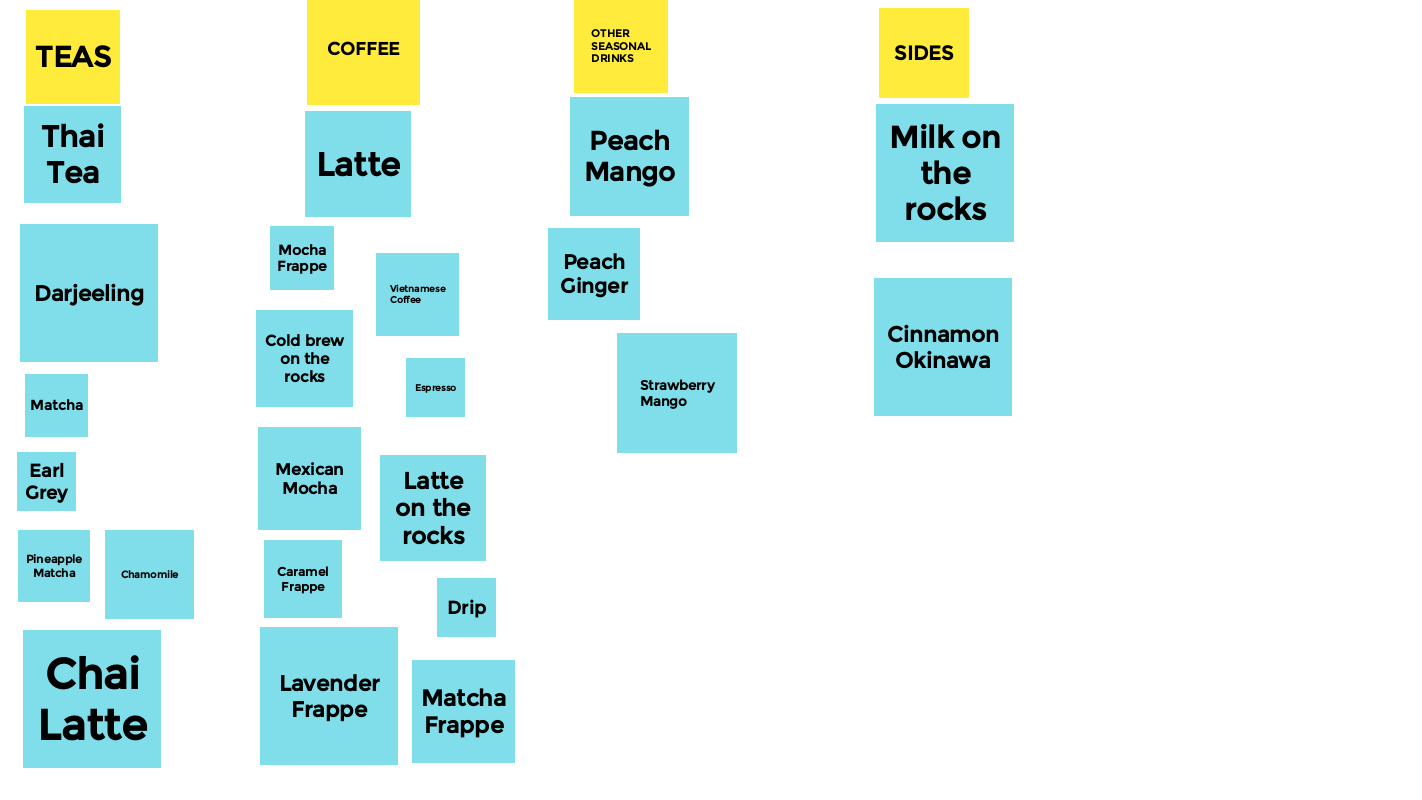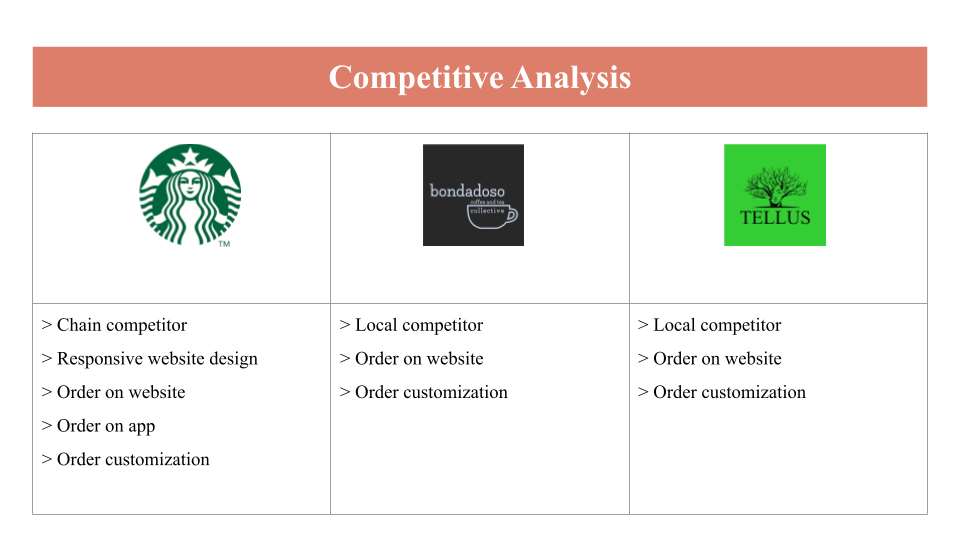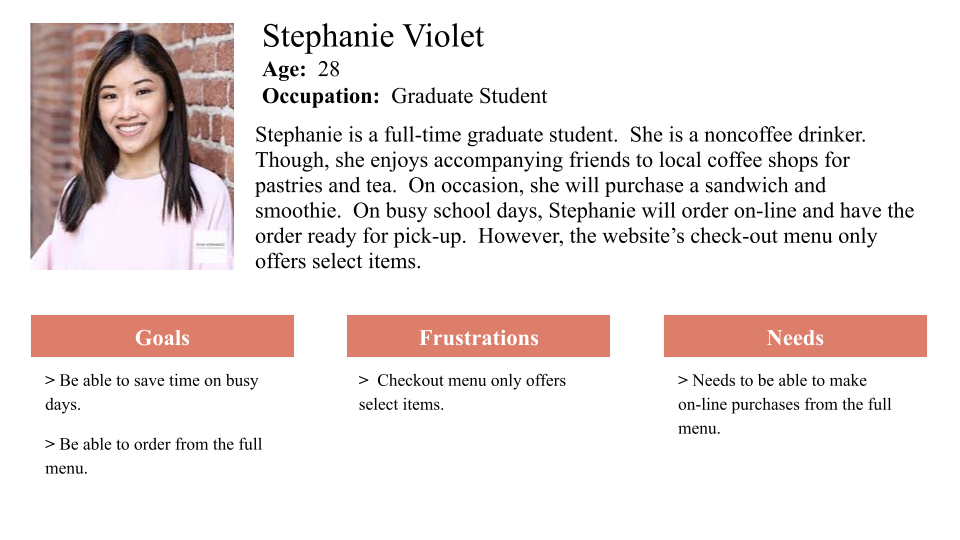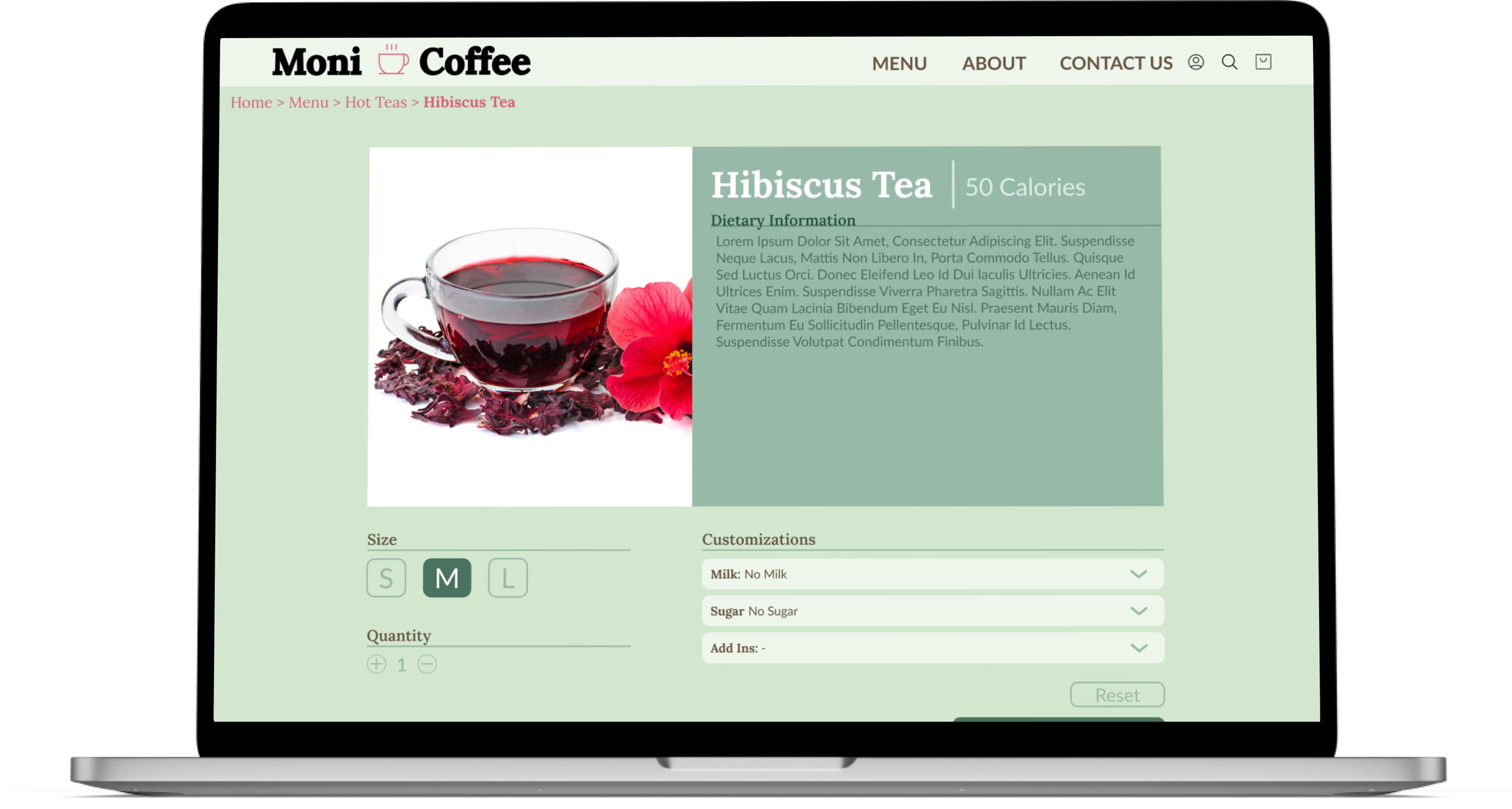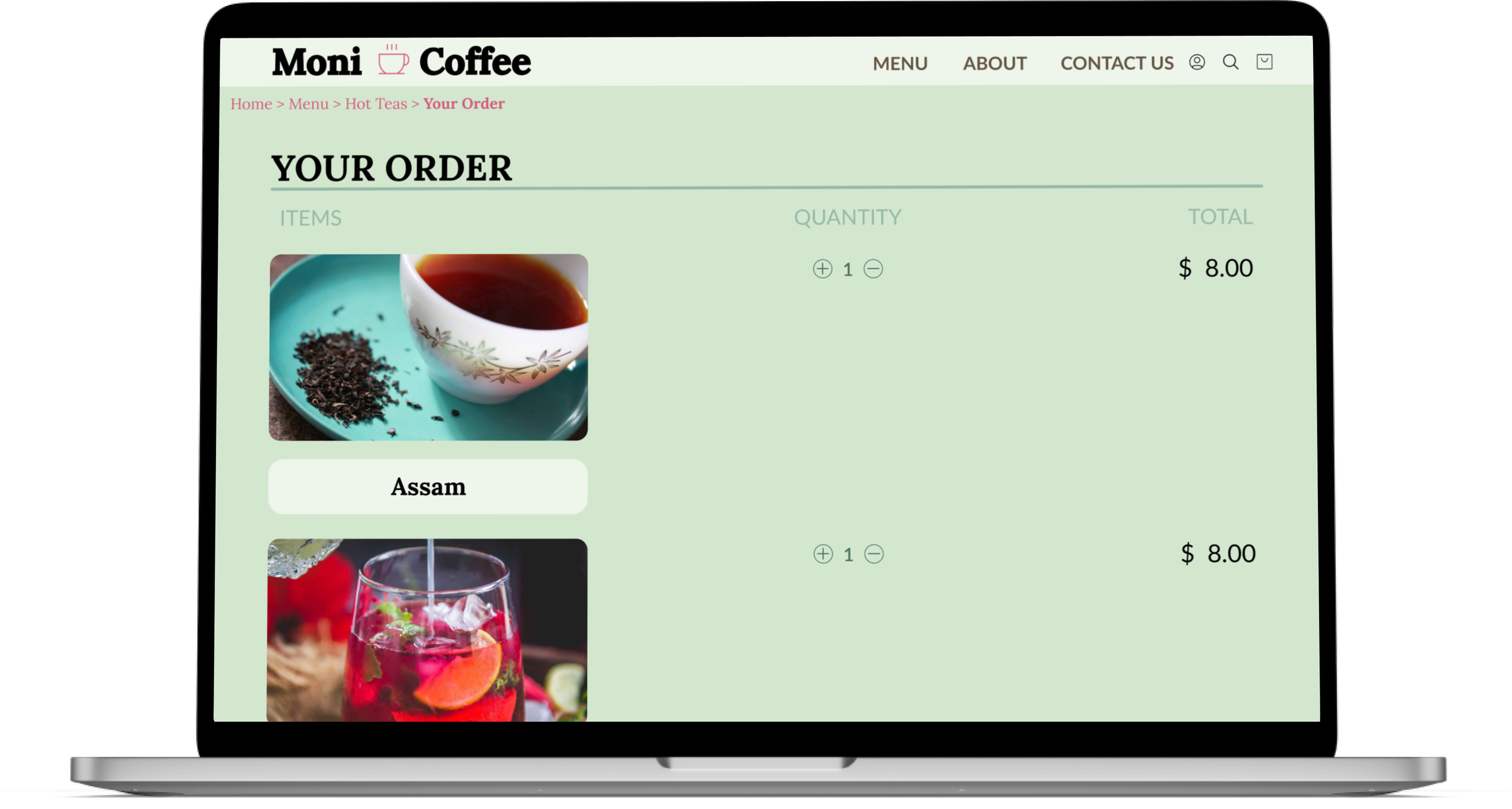Moni Coffee & Tea
Evaluative Research
+
Conceptual E-commerce Redesign
Role: UX Researcher + UX/UI Designer
Timeline: 2 Weeks
Objectives:
>> Evaluate Moni Coffee & Tea’s current website to address customer pain points.
>> Apply user research insights to inform the redesign of Moni Coffee & Tea’s website.
Project Flow: Review Project Brief >> Research & Synthesis >> Ideation >> Mid-fidelity Wireframes >> Usability Testing >> Hi-Fidelity Wireframes
Qualitative Research Methodologies: Competitive & Comparative Analysis, Content Analysis of 75 Yelp Reviews, 5 Participant Interviews, 3 Task Analyses, 2 Card Sorts, Affinity Mapping, Wireframes, Prototyping, and 2 Usability Tests.
Executive Summary
Context
Moni Coffee & Tea (hereafter, Moni) is a boutique coffee shop nested in a local Bay area neighborhood offering a wide variety of hot coffees, cold brews, refreshing teas, and sweet and savory delights. Customers enjoy Moni’s spacious interior, ambiance, outdoor dining, and drinks and food. However, customers are frustrated by the third-party on-line shopping experience. What can we do to give our Moni customers a delightful on-line shopping experience to increase on-line engagement and usage?
Data Driven Designs
Research Insights: Customers want the ability to:
>> use a beautiful, organized, and responsive website
>> order from the full menu
>> customize orders
Actionable Insights for a Responsive Desktop Redesign:
>> Appealing Interface: As the UX/UI Designer, I selected a mint-green color palette to reflect the calm beauty of nature and the sunny out-door dining experience.
>> Full Menu: I designed a page to showcase the full menu because customers wanted the ability to access the full menu for on-line purchases.
>> Customization: I designed a page to showcase customization because customers wanted the ability to customize orders.
Tools: Figma, Jamboard, Google Slides
Figma Files: (1) Mid-Fidelity (2) High-Fidelity (3) Prototype
Research-based Recommendations
Based on user interviews and usability tests, I recommend that Moni Business Owners consider developing a mobile app for “on-the-go” and “time-pinched” customers.
A Moni Mobile App could offer the following business impact:
Internal Benefits:
>> 15-30% increase in revenue by removing third party order/delivery platforms (e.g., Door Dash, Uber Eats)
>> Reach broader customer base
>> Create flexibility/adaptability for Moni Staff
External Benefits:
>> Increase customer satisfaction and needs
>> Direct access to Moni by removing third party platform
>> Save customer time
>> Create flexibility/adaptability for customers
A Moni Mobile App should prioritize the following features:
>> Appealing Interface
>> Responsive Interface
>> Full Menu Options
>> Ability to Customize
5 Step Research Process
Step 1: Contextual Inquiry
As the UX Researcher, I began the inquiry process by learning about the context.
>> Who is Moni?
>> What does their current website look like, sound like, and feel like?
I visited Moni to get an in-person experience. Unfortunately, they appeared to be temporarily closed.
I also spent some time navigating their website to get a sense of the on-line shopping experience.
Step 2: Quantitative Data + Content Analysis + Synthesis
I reviewed 75 Yelp Reviews because it is important to understand current customers’ experiences to inform UX/UI design decisions. The Yelp data showed that the majority of the customers were satisfied.
Quantitative data only offers one-side of the story. To gain a full understanding of customers’ experiences, I conducted a content analysis to learn about customers’ experiences qualitatively.
The Content Analysis yielded the following trends:
>> Positive Reviews: spacious interior, ambiance, outdoor dining, drinks and food.
>> Negative Reviews: slow service, price-to-food ratio, inconsistency in food service and tastes.
Moni Coffee & Tea: 75 Yelp Reviews
Customers’ Reviews
Step 3: Participant Interviews + Synthesis
I conducted 5 one-on-one user interviews to assess their attitudes about coffee shops.
>> Which coffee shop is your favorite? Why do you like it?
>> Do you make on-line purchases? Why?
I recorded all the interviews and used Microsoft’s dictation tool to transcribe the data. Then, I coded the interviews until saturation was reached.
Interview Data Themes
-
“I like Third Wave coffee shops.”
-
“I want the whole experience…walk, wait in line. It’s an outing.”
-
“I will [order online] if I am in a pinch.”
-
“I’m not a coffee drinker. I will order pastries and tea.”
Step 4: Task Analysis + Synthesis + Card Sort
I conducted 3 one-on-one task analyses and 2 card sorts to assess users’ attitudes and behaviors about Moni’s current website.
During the task analysis, users were instructed to accomplish the following:
>> Think aloud while navigating Moni’s current website.
>> Make an on-line purchase.
I recorded all the task analyses and used Microsoft’s dictation tool to transcribe the data. Then, I coded the task analyses until saturation was reached.
Card Sorting
Next, I instructed 2 users to use Jamboard to conduct a card sort. The purpose was to gain insights on how users categorized Moni’s products. This information was used to inform the product page designs.
Task Analysis Data Themes
-
“The navigation is dated; not sophisticated.”
-
“The [website] is really harsh to read…kind of agressive.”
-
“Menu is not clickable.”
-
“Where is my Thai Tea. I can’t order from the on-line menu.”
Card Sorts
User #1: Cart Sort
User #2: Cart Sort
Step 5: Competitive & Comparative Analysis
Personas
Based on the research synthesis, I created two personas:
>> Persona 1: The “Expert” embodies the characterization of the “coffee connoisseur”. They are individuals who appreciate high-quality coffee beans and a cup of fresh brew.
>> Persona 2: The “Novice” embodies the characterization of the “non-coffee drinker”. They are individuals who appreciate teas and pastries.
Expert
Novice
High-Fidelity Wireframes
Home
Full Menu
Customization
Order Summary
